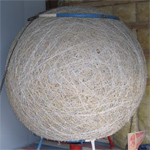Well, November 1st came and went, and I did not start on NaNoWriMo this year. As I mentioned in last week’s post, I had several reasons not to do NaNoWriMo, and the one that really killed it was the over-full writing schedule. Specifically, November arrived without me finishing the draft to Debts of My Fathers. Add to that the edits and polishing needs for two more novels, and jumping ship to do NaNoWriMo this year just seemed to be a bad choice for my long-term goals. However, I am still hoping to squeeze out one more draft this year, so my December might turn into Personal Novel Writing Month (PeNoWriMo).
But with four NaNoWriMo wins under my belt from previous years, I figure I’ve got a few useful things to say about getting to that 50,000 word finish line. I’ve done it with time off. I’ve done it on death-march projects. I’ve even done it with a pretty serious chest cold. In short, it can be done.
But how? More specifically, how do you keep going when you hit the wall of plot confusion, self-doubt, and fatigue around 18,000 words? Maybe it comes early, or maybe late, but somewhere in NaNoWriMo, you’re bound to hit some kind of wall. Here are some ways to keep grinding out 1,666 words each day when even 100 seems impossible.
 1. Build momentum while padding it out. If you have a hard time starting at the beginning of the writing session, just pad out the text with description or trivial dialog. Yes, that part will need to be cut, but that will happen months later during the edits. Put it in now, get your fingers moving, and once the words start flowing, segue into the morgue scene where Dr. Pickles finds the missing bullet.
1. Build momentum while padding it out. If you have a hard time starting at the beginning of the writing session, just pad out the text with description or trivial dialog. Yes, that part will need to be cut, but that will happen months later during the edits. Put it in now, get your fingers moving, and once the words start flowing, segue into the morgue scene where Dr. Pickles finds the missing bullet.
 2. Park downhill. This is another technique for easing your way into the next writing session, but it requires you to plan ahead. When you’re running out of your allotted writing time (or you’ve beaten back the daily word count to nothing), don’t wrap things up. Instead, leave things right there in the middle of the action with just a couple of notes to remind you what happens next. That way, when you come back the next day, you don’t have to stare at the blank page wondering what comes next. Instead, you can pick back up with the grenade still sailing through the air past our intrepid hero.
2. Park downhill. This is another technique for easing your way into the next writing session, but it requires you to plan ahead. When you’re running out of your allotted writing time (or you’ve beaten back the daily word count to nothing), don’t wrap things up. Instead, leave things right there in the middle of the action with just a couple of notes to remind you what happens next. That way, when you come back the next day, you don’t have to stare at the blank page wondering what comes next. Instead, you can pick back up with the grenade still sailing through the air past our intrepid hero.
 3. Knock something over. If you’re pantsing it (or if you suddenly realize your careful outline isn’t working), you can get stuck, unsure of what happens next. This is pretty common around the 20-30,000 word mark. You’ve established the setting, put the characters in motion, established the conflict, and now you’re left wondering what to do between now and that distant climax. This is the perfect time for something unexpected. The car breaks down. Your hero gets arrested. The dinner guest is carrying the pox. Shit hits the fan! You’ll crank out 10-15,000 words recovering from this, and very likely it will set up something important for the end.
3. Knock something over. If you’re pantsing it (or if you suddenly realize your careful outline isn’t working), you can get stuck, unsure of what happens next. This is pretty common around the 20-30,000 word mark. You’ve established the setting, put the characters in motion, established the conflict, and now you’re left wondering what to do between now and that distant climax. This is the perfect time for something unexpected. The car breaks down. Your hero gets arrested. The dinner guest is carrying the pox. Shit hits the fan! You’ll crank out 10-15,000 words recovering from this, and very likely it will set up something important for the end.
 4. Burn your thesaurus. Well, not literally burn it, but try to stay away from it. The point here is to not get bogged down in the wordcraft. Yes, there are writers who turn out beautifully poetic first drafts… in eight years. They do not do it in thirty days. More than once, I’ve just thrown down some crap and followed it up with a note to my later self, “That doesn’t work as well as it needs to. Fix it.”
4. Burn your thesaurus. Well, not literally burn it, but try to stay away from it. The point here is to not get bogged down in the wordcraft. Yes, there are writers who turn out beautifully poetic first drafts… in eight years. They do not do it in thirty days. More than once, I’ve just thrown down some crap and followed it up with a note to my later self, “That doesn’t work as well as it needs to. Fix it.”
 5. Resist the urge to edit. You’re twenty thousand words in and you realize your hero needs a sidekick. Do not go back and edit what you have to add the sidekick. Just drop in a little note to your later self that you are adding the sidekick and that it will need some exposition and interaction earlier on. Then start writing as if the sidekick has been there the whole time. The same goes for evil nemeses, long-lost brothers, and dead mentors. Even if you did an outline, the act of writing that first draft reveals what the story really is. You can deal with that extra leg later on.
5. Resist the urge to edit. You’re twenty thousand words in and you realize your hero needs a sidekick. Do not go back and edit what you have to add the sidekick. Just drop in a little note to your later self that you are adding the sidekick and that it will need some exposition and interaction earlier on. Then start writing as if the sidekick has been there the whole time. The same goes for evil nemeses, long-lost brothers, and dead mentors. Even if you did an outline, the act of writing that first draft reveals what the story really is. You can deal with that extra leg later on.
If that doesn’t keep the words flowing, you might need chemical intervention or a neural interface. For other thoughts on NaNoWriMo, see my column last year: Nah Know Rhyme Oh!

 The best metaphor I have for my process is a road trip. I’m going to New York City. Before I walk out to my car, I have a clear destination in mind, not just the city, but that diner at 58th and Columbus with the delicious chicken parmesan sandwich. Similarly, I have the climactic scene and the denouement clearly in my head before I start writing. The question that remains: how do I get there?
The best metaphor I have for my process is a road trip. I’m going to New York City. Before I walk out to my car, I have a clear destination in mind, not just the city, but that diner at 58th and Columbus with the delicious chicken parmesan sandwich. Similarly, I have the climactic scene and the denouement clearly in my head before I start writing. The question that remains: how do I get there? At that point, I still haven’t committed myself to either the plotter or the pantser strategies. The plotter (or outliner) would get out all the maps, plot the route, decide where to eat, where to sleep, where to get gas, how long each section was going to take, and what time of day to hit each point. The true pantser would hop in the car and drive, trusting to fate that he’ll show up in New York yet acknowledging that he might pass through Tokyo on the way.
At that point, I still haven’t committed myself to either the plotter or the pantser strategies. The plotter (or outliner) would get out all the maps, plot the route, decide where to eat, where to sleep, where to get gas, how long each section was going to take, and what time of day to hit each point. The true pantser would hop in the car and drive, trusting to fate that he’ll show up in New York yet acknowledging that he might pass through Tokyo on the way.
